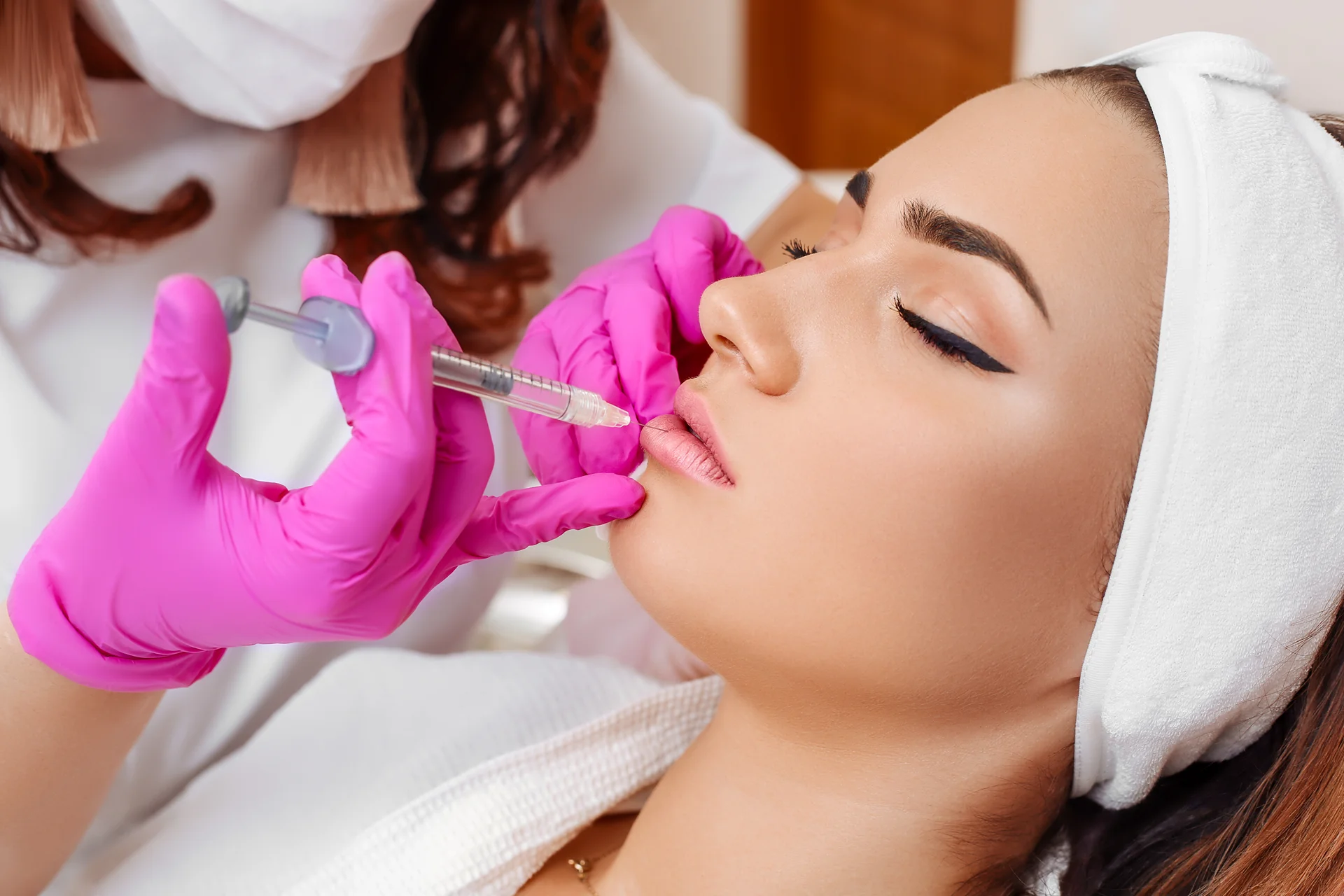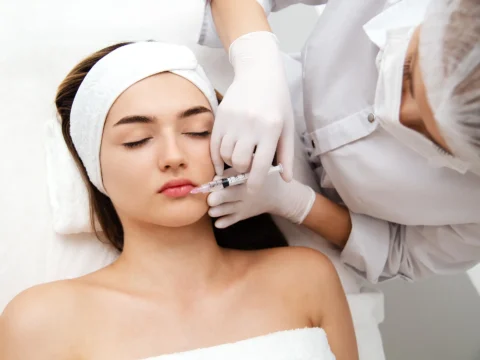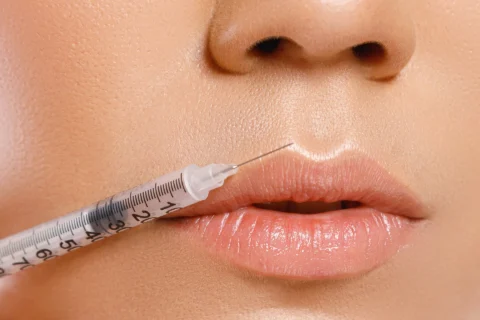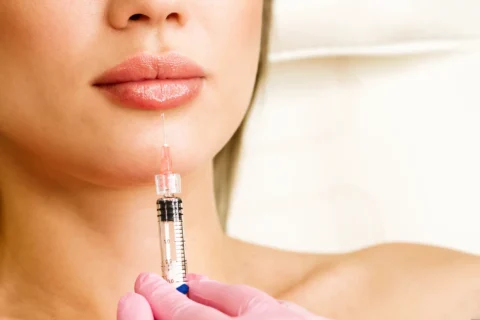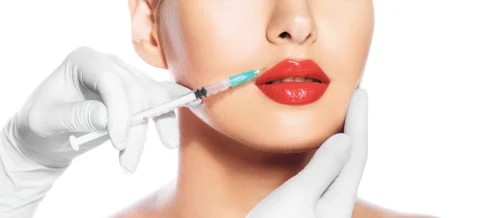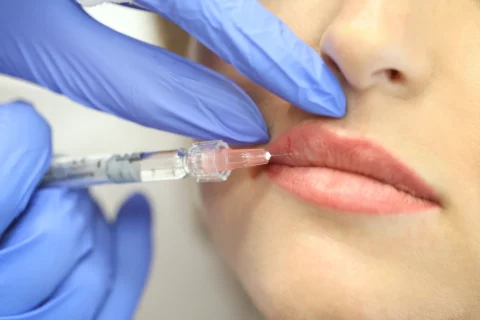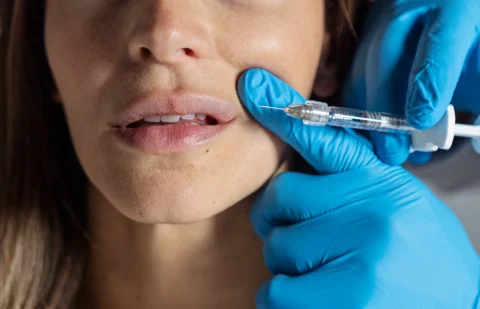For new mothers, breastfeeding is a beautiful yet demanding phase requiring careful consideration of anything introduced into the body.
As an expert provider of cosmetic injectables at Ethos Aesthetics + Wellness, Dr. Soni receives many inquiries from patients curious if they can safely get lip fillers while breastfeeding their child.
With breastfeeding, the infant’s source of nutrition comes directly from the mother’s milk supply. This requires vigilance to ensure no foreign substances pass through the breast milk, as even minimal exposure could negatively impact a newborn.
Mothers thus rightfully exercise abundant caution before proceeding with elective cosmetic procedures like lip fillers after having a baby.
A Science-Based Approach to Lip Fillers While Breastfeeding
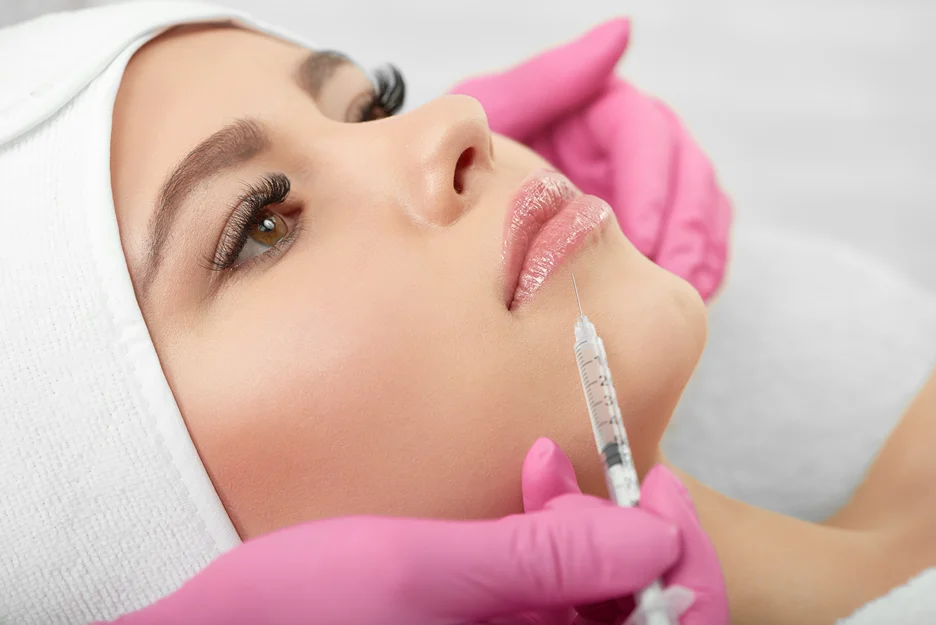
At our practice, Dr. Soni always emphasizes a comprehensive approach focused on each patient’s unique health profile when advising on treatments pre- and post-partum. As a board-certified physician with specialized training, he relies on scientific evidence and safety data in addition to his extensive clinical expertise guiding patients on their cosmetic journey.
In this post created by our team at Ethos Aesthetics + Wellness, we will explore the key considerations around getting lip fillers while breastfeeding an infant. Dr. Soni will provide science-backed guidance to help new mothers make the most informed decision about if and when to proceed with lip enhancement after giving birth.
How Lip Filler Injections Work
Lip fillers involve injecting dermal filler products like Juvéderm or Restylane into the lips using an ultrafine needle. The hyaluronic acid filler adds volume to wrinkles, folds and thinning areas to achieve a plumper, smoother and more defined lip shape.
Lip fillers are among the most popular minimally invasive cosmetic treatments, providing an immediate yet temporary augmentation effect lasting 6-12 months.
During a lip filler treatment, Dr. Soni meticulously assesses each patient’s facial anatomy and underlying lip structure. He then develops a customized injection plan targeting specific areas in need of added volume or contouring.
Using his artistic eye and advanced injection techniques, Dr. Soni skillfully integrates the filler seamlessly for results that look and feel beautifully natural.
At Ethos Aesthetics + Wellness, patient comfort and safety is always the top priority. Dr. Soni administers lip fillers using tiny needles to minimize discomfort, and applies numbing medication to keep patients relaxed throughout the quick 10-15 minute treatments.
He also prescribes the appropriate medication before and after to control potential swelling and bruising. With Dr. Soni’s expert precision, patients can continue normal activities immediately after their lip enhancement.
Safety Profile of Dermal Fillers
Modern dermal fillers like the hyaluronic acid products Juvederm and Restylane have excellent safety records supported by extensive clinical study data. These injectables are synthetically derived in a lab, minimizing risk of allergic reaction.
The hyaluronic acid fillers are also naturally absorbed by the body over time, providing a reversible augmentation effect.
Lip fillers are FDA-approved for adults over 21 and widely used for cosmetic correction of aging changes around the mouth. Juvederm and Restylane specifically have Category B ratings from the FDA for safety in pregnancy and nursing.
This means no adverse events have been observed with these hyaluronic acid fillers in human or animal studies assessing effects on fetal development.
With his advanced expertise in cosmetic filler injections, Dr. Soni utilizes meticulous injection techniques for highly-customized, subtle and natural-looking lip enhancement.
By working with tiny amounts of filler placed only into the lips and immediate surrounding area, Dr. Soni is able to precisely contour and define each patient’s lips for beautiful results. This controlled approach maximizes safety while avoiding migration or lumping.
Potential Risk Factors with Lip Fillers While Breastfeeding
While dermal fillers like Juvederm and Restylane have reassuring safety data, there are a few factors we consider when advising patients who are breastfeeding about proceeding with lip injections:
Infection risk – Any needle injection carries a minor risk of bruising, bleeding or infection. With nursing mothers, localized infection could potentially spread more systemically. At Ethos, we emphasize strict sterile injection protocols and post-treatment care instructions to prevent any possible complications.
Foreign body reaction – In very rare cases, some individuals may experience an allergic-type reaction to hyaluronic acid fillers. This could cause local swelling and hardness that interferes with latching during breastfeeding.
Accidental injection – Although highly unlikely, stray injection of filler into a blood vessel could allow minute traces to enter breast milk supply. Our advanced injection methods utilize cannulas and precise low-pressure delivery techniques that essentially eliminate any chance of vascular filler embolization.
Limited human data – No large scale controlled trials have specifically evaluated dermal fillers in breastfeeding women. However, given the localized nature and minimal systemic absorption, major safety issues are not anticipated. But individual patient factors must still be weighed carefully.
Emotional factors – The hormonal fluctuations and stressors following childbirth mean some patients may benefit from waiting until after breastfeeding for elective cosmetic procedures. Assessing mental readiness and motivations is an important part of our patient-centered approach.
With these considerations in mind, we guide each patient through an individualized risk-benefit assessment to determine if lip filler injections are appropriate during the postpartum nursing period. Safety is always the top priority at Ethos Aesthetics + Wellness.
Individualized Approach for Nursing Mothers
Ethos Aesthetics + Wellness emphasizes that each patient has a unique clinical profile that must be carefully considered when assessing cosmetic procedures pre- or post-partum.
Our team works closely with new mothers to address all their questions and concerns about whether lip fillers are recommended while breastfeeding their infant.
Below are some of the key factors that we evaluate during consultations with nursing mothers considering lip enhancement:
- Elapsed time post-delivery – Mothers who recently gave birth may benefit from allowing more time for hormonal stabilization and the emotional adjustments of early motherhood before pursuing elective cosmetic treatments.
- Infant’s age and feeding demands – The first few months of breastfeeding require round-the-clock feedings to establish milk supply. Mothers with older infants on a consistent feeding routine may feel more comfortable undergoing filler injections.
- Breastfeeding challenges – Any existing lactation difficulties like low milk supply or poor infant latching raise caution about cosmetic procedures until resolved.
- Personal health status – Underlying medical conditions or post-delivery healing considerations for each patient guides appropriate timing for aesthetic treatments.
- Mental readiness and motivations – We thoughtfully explore patients’ emotions and cosmetic goals to ensure their desires come from a mentally healthy place.
- Risk tolerance – Some mothers are unwilling to accept even minimal risks of complications that could disrupt breastfeeding. Others may feel assured by the safety data and be comfortable proceeding.
- Alternatives – Non-injectable lip plumping options like lip masks or plumping glosses may provide temporary effects without risks for new mothers unwilling to undergo filler injections while nursing.
Through comprehensive consultation and education, We help each patient navigate the decision on whether lip fillers are recommended for their individual situation and health status.
Optimizing Safety and Outcomes
For new mothers given the green light by Dr. Soni to receive lip fillers while breastfeeding, our team provides specialized guidance to ensure the best possible experience and outcomes.
Below are some of the ways we optimize safety, comfort and results for patients undergoing lip enhancement procedures during the postpartum nursing period:
- Thorough clinical evaluation identifying any potential contraindications for elective lip filler injections after giving birth.
- Review of all supplements and medications to check for interactions with dermal fillers.
- Pretreatment anti-inflammatory and anesthetic regimens to minimize discomfort and side effects.
- Avoiding over-correction and prolonged lip massage during injection to reduce risk of filler migration into vessels.
- Emphasis on sterile injection technique and proper post-treatment care to lower infection likelihood.
- Close follow up to monitor for any signs of complications and proactively address any concerns.
- Support for reporting to cosmetic device registries to improve safety data on dermal fillers.
- Ongoing guidance around timing of touch-up injections to work within each patient’s infant feeding schedule.
- Customized treatment plans that provide beautiful, subtle enhancement for new mothers’ self-confidence.
The safety of breastfeeding infants remains Dr. Soni’s highest priority when advising patients on cosmetic procedures. By taking this cautious approach focused on each woman’s unique needs, we aim to help new mothers seamlessly integrate aesthetic treatments into their postpartum care plan.
Is It Safe to Get Lip Fillers While Breastfeeding: Key Takeaways
For patients curious about whether they can safely undergo lip filler injections while breastfeeding, some important takeaways include:
- Modern dermal fillers like Juvederm and Restylane have robust safety profiles with minimal systemic absorption and no evidence of fetal/infant risks.
- Small studies tracking outcomes in postpartum women receiving lip fillers have not identified any adverse events or issues with lactation.
- The lack of human data still warrants a cautious approach considering individual factors like general health, mental readiness, breastfeeding patterns and risk tolerance.
- Thorough consultation with an experienced cosmetic injector guides each patient through a personalized risk-benefit assessment.
- Conservative lip filler injection techniques, sterile protocols and proper aftercare minimize any potential downsides for optimal safety.
- Temporary alternatives like lip-plumping glosses may be preferred by some women unwilling to undergo any risks to breastfeeding.
- Continuing to track and report outcomes will give doctors and patients more definitive guidance in the future.
As leading providers of cosmetic injectables, Dr. Soni and our team at Ethos Aesthetics + Wellness are here to support new mothers in pursuing their aesthetic goals while prioritizing postpartum health.
We offer compassionate consultations, education and care guidance so patients can make empowered decisions about whether lip fillers fit into their family plans after having a baby.
Frequently Asked Questions About Lip Fillers While Breastfeeding
Below are answers to some of the most commonly asked questions new mothers have about getting lip filler injections during the postpartum breastfeeding period.
Is it safe to get lip fillers while breastfeeding?
According to existing evidence, lip fillers like Juvederm and Restylane appear generally safe for many breastfeeding women when performed by an experienced injector using proper injection and sterility protocols.
But the lack of large human data warrants a cautious approach considering individual factors with guidance from your cosmetic provider.
What are the main risks of lip fillers while nursing?
Potential risks mainly include infection, allergic reaction, filler migration/lumping, and remote chance of vascular compromise. But skilled injectors like Dr. Soni utilize techniques that minimize these risks. There are currently no reports of lip fillers impacting milk supply or infant development.
How long after having a baby should you wait for lip injections?
There is no set required waiting period, but Dr. Soni typically recommends mothers wait at least 3-6 months post-delivery for optimal wound healing, hormone stabilization and emotional adjustment to new motherhood.
But each patient is assessed individually accounting for health history, procedure goals and other factors.
Do you have to pump and dump breastmilk after getting lip fillers?
Because dermal fillers like Juvederm and Restylane show little to no systemic absorption, pumping and dumping breastmilk is not required.
No filler molecules have been detected in breastmilk, indicating directly nursing is safe based on current evidence.
When can I resume normal breastfeeding after lip filler treatment?
You can resume breastfeeding immediately after lip filler injections with no expected risks. But you may want to pump just prior to optimize comfort, as some tenderness/swelling is common during the first 24 hours post-injection before quickly subsiding.
How much do lip fillers cost during the postpartum period?
Pricing is customized based on the specific areas, amount of filler needed for planned enhancement, and number of syringes your injector anticipates. Our practice offers new mother discounts. Reach out for current pricing details.
Are there nonsurgical alternatives to lip fillers while breastfeeding?
Options like lip plumping glosses, masks and creams can provide temporary fullness without injections. Other alternatives include lip blushing tattooing for a more lasting tint effect. Discuss all options with Dr. Soni to decide the optimal approach for your situation.
When will I need lip filler touch ups after having a baby?
With the full syringe method, you can expect natural-looking results lasting 6-12 months. Follow-up visits can be conveniently timed based on your infant’s age and feeding schedule. We optimize your filler maintenance plan for your unique needs.
Can I combine lip fillers with other treatments post-pregnancy?
Dr. Soni will assess your individual case, but lip fillers may be safely combined with neurotoxin like Botox or Dysport for total facial rejuvenation. Other non-invasive treatments like microneedling or laser skin resurfacing may also be incorporated into your mommy makeover plan.
What precautions should I follow after getting lip injections while breastfeeding?
Avoid excessive movement of the lips for the first 24 hours, abstain from saunas/steam rooms for 1-2 days, and do not apply makeup for at least 4 hours. Use ice packs to control swelling. Follow all of our recommended aftercare instructions closely to support proper healing.
The Ethos Aesthetics Difference
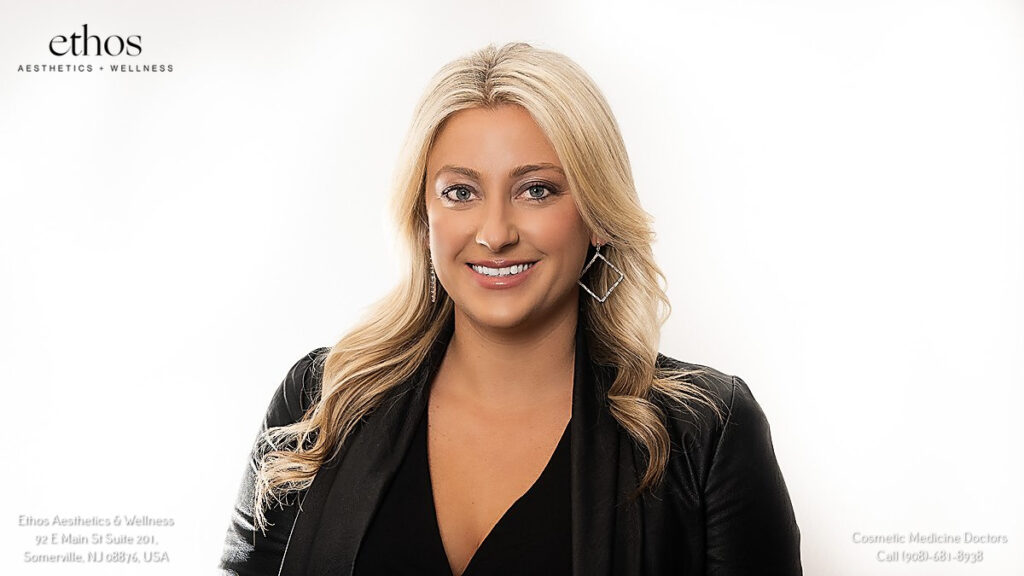
At Ethos Aesthetics + Wellness, new mothers can trust they are in the most capable hands for personalized guidance on cosmetic injectables pre- and post-partum.
Dr. Soni combines his specialized training, artistic eye, and caring approach to help every patient look and feel their best during the transitional stages of motherhood.
We welcome you to schedule a personalized consultation with Dr. Soni to discuss your aesthetic goals, review your health profile, and determine if lip fillers are recommended during your postpartum breastfeeding experience.
Call (908) 628-1916 today to book your appointment and get started on enhancing your natural beauty.

